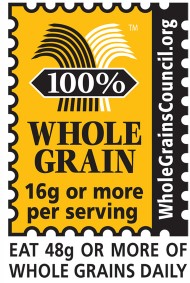For many people, healthy eating is a chore. This is especially true for those who have gone through bariatric surgery and are adjusting to new eating habits. After surgery, monitoring what and how much you put in your body becomes critical to maintaining your weight loss goals. Making healthy eating choices doesn’t have to be a chore if you start with understanding food labels.
 Let’s start with dispelling a few myths about food labels, like eating organic salad and U.S. free-range natural fresh meats will ensure your food is fresh and nutrient rich. The first step in adopting healthy eating habits is to eat fresh fruits and vegetables and consume meats low in fat and high in protein; however, not all food is created equal and not all labels mean what you think they mean. Some labeling and terms can be misleading, which could lead you to think you’re making a healthy eating choice, when you are not. For instance, before you assume “fresh” means it was never frozen and or was picked recently, you should be aware that the label “fresh” only means it was not cooled to a temperature below 26 degrees or still falls withing “shelf-life” limits.
Let’s start with dispelling a few myths about food labels, like eating organic salad and U.S. free-range natural fresh meats will ensure your food is fresh and nutrient rich. The first step in adopting healthy eating habits is to eat fresh fruits and vegetables and consume meats low in fat and high in protein; however, not all food is created equal and not all labels mean what you think they mean. Some labeling and terms can be misleading, which could lead you to think you’re making a healthy eating choice, when you are not. For instance, before you assume “fresh” means it was never frozen and or was picked recently, you should be aware that the label “fresh” only means it was not cooled to a temperature below 26 degrees or still falls withing “shelf-life” limits.
Food Labels and Healthy Eating
Perhaps understanding the definitions of some of the most common labels can help you in making healthy eating choices:
“Certified Organic” – These are grown without hormones, antibiotics, fertilizers, synthetic pesticides or sewage sludge and cannot be genetically engineered, cloned or irradiated. There is no U.S. Government standard for Seafood. It can’t be “organic”.
Country of Origin – Required on all chicken, seafood, produce, and some ruts. (U.S. does not required on pork and beef, since 2015)
USDA Inspected – Means the food meets certain quality standards and has been inspected by USDA employees, but the grade is based in quality and size – not production methods. This label tells you nothing about the company’s practices.

Irradiation “Radura” Symbol – Grocery store foods that has been treated with radiation to reduce spoilage and eliminate some bacteria such as e-coli, salmonella, etc. must be labeled and marked with a Radura symbol. Although the radiation doesn’t stay in food, there are currently no studies done to determine the effects radiation has on nutritional values and the foods nutrients.
rBGH-Free or rBST-Free – Indicates no synthetic hormones were administered. Although hormones are allowed for feed and dairy cattle, Federal law prohibits the use of hormones on hogs and poultry.

Sugar Free – Usually means a synthetic sugar or High fructose Corn Syrup (HFCS) is hidden in the food. Check the label for ingredients that end in “..ose” or anything with “malt” such as barley malt, syrups, etc.
Fresh – Indicates the meat was not cooled below 26 degrees F but the U.S. only regulates this in poultry and not other meats or produce.
Cage Free – This means that the were birds raised without cages and had enough room to spread their wings but may still come from crowded factory farms.
Pasture-Raised – Means the animal spent at least some time outdoors on a pasture, feeding on grass or forage there but is no standard on how much time is required to earn this label..
Grass-Fed – Indicates that an animal’s primary food, after weaning, was grass or forage and not grains such as corn. There are no requirements regarding the disclosure of using antibiotics or hormones or on the animal’s living conditions.
Free Range – Only applies to poultry and is not regulated forpigs, cattle or egg-producing chickens. The standards for this label are very low and do not apply to living conditions or the use of antibiotics or hormones.
Natural or Naturally Raised – Means that the meat cannot contain artificial color, flavors, preservatives or other artificial ingredients. Doesn’t address how the animal was raised or if antibiotics or hormones were used.
“Multi-Grain” and “Whole-Wheat”– If it has more than 1 type of grain, they can say “multi-grain” even though it may be mostly white flour. It can say “whole wheat” even if it doesn’t mean 100% whole wheat. Best to look for the seal from the Whole Grains Council that lets you know there are 16 grams of whole grains per serving.
Healthy Eating and Serving Size
In addition to understanding labels, you will need to be conscious of your portions. Portion control guidelines, to maintain your weight and continue in your healthy eating habits, may not be the same as what is suggested on your food’s label. You want to look at how many servings there are in a container. Most drinks are actually 2 portions, so when reading the label you would have to double the information, which would double your carbs, sugars, proteins, sodium, etc.
As a general healthy eating rule we suggest you use measuring cups and food scales and follow these formula’s for proper portions:
- Keep Protein to Carbohydrate ratio at 1 to 1 – eat 1 gm of carbs per 1 gm of protein (IE…if you eat 20 grams of protein, you should not eat more than 20 grams of carbs.)
- Fat consumed must stay low – consume LESS than 45 grams per day
- Watch your total carbs! – carbs minus fiber = net carbs
When you are not at home you can use these guidelines for measuring portions:
- 3 ounces of cooked meat, fish or poultry is about the size of a deck of cards
- ½ cup is size of an ice cream scoop
- 1 cup is size of a tennis ball
- 1 ounce of cheese is size of a domino
It is absolutely acceptable to spend time in the grocery store comparing labels or online researching product labeling. Your on-going relationship with food depends on how well you understand and control what you consume. Healthy eating habits take time to develop and the more you learn about the food you consume the easier it is to make healthy choices.










